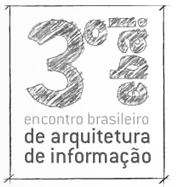So, my article is up… thanks to all the excellent editors who pushed me to finish the dang thing over the last seven months. Procrastination is a fine art, my friends.
Personas and the Role of Design Documentation – Boxes and Arrows
Here’s a nugget:
A persona document can be very useful for design—and for some teams even essential. But it’s only an explicit, surface record of a shared understanding based on primary experience. It’s not the persona itself, and doesn’t come close to taking the place of the original experience that spawned it.
Without that understanding, the deliverables are just documents, empty husks. Taken alone, they may fulfill a deadline, but they don’t feed the imagination.
Edited to Add:
Already I’m getting some great feedback, and I’m realizing that I may not have made things quite clear enough in the article.
The article is meant as a corrective statement, to a degree. I focus so strongly on what I see as the *first* priority of methods and documentation in design work—shared artifacts for the design process, because I think this has gotten lost in the conventional wisdom of “documents for stakeholders.” So, I amped up my point in the other direction, trying to drag the pendulum more toward the center.
I was careful to point out that stakeholder communication is also, of course, a very important goal. But it is a SEPARATE goal. It may even require creating separate deliverables to achieve!
We too often get caught up in using documentation as a tool for convincing other people, rather than tools for collaborative design among the practitioners. I may have overstated my case, though, and, alas, obscured these caveats I scattered throughout.
In short: I wanted to emphasize that personas are first and foremost the act of empathetic imagination for design; and I wanted to emphasize that all design documentation is first and foremost an artifact/tool for collaborative reflection, shared understanding and iteration. As long as we remember these things, we can then go on to make all the persona descriptions and slick stakeholder deliverables we want and need to get the rest of the job done.
Maybe I should’ve used that “in short” statement in the article? But, I guess if I’d kept revising, it’d have taken me another six months!
Please do keep the feedback coming, though. Mostly, I’m wanting to spark conversations like these!




